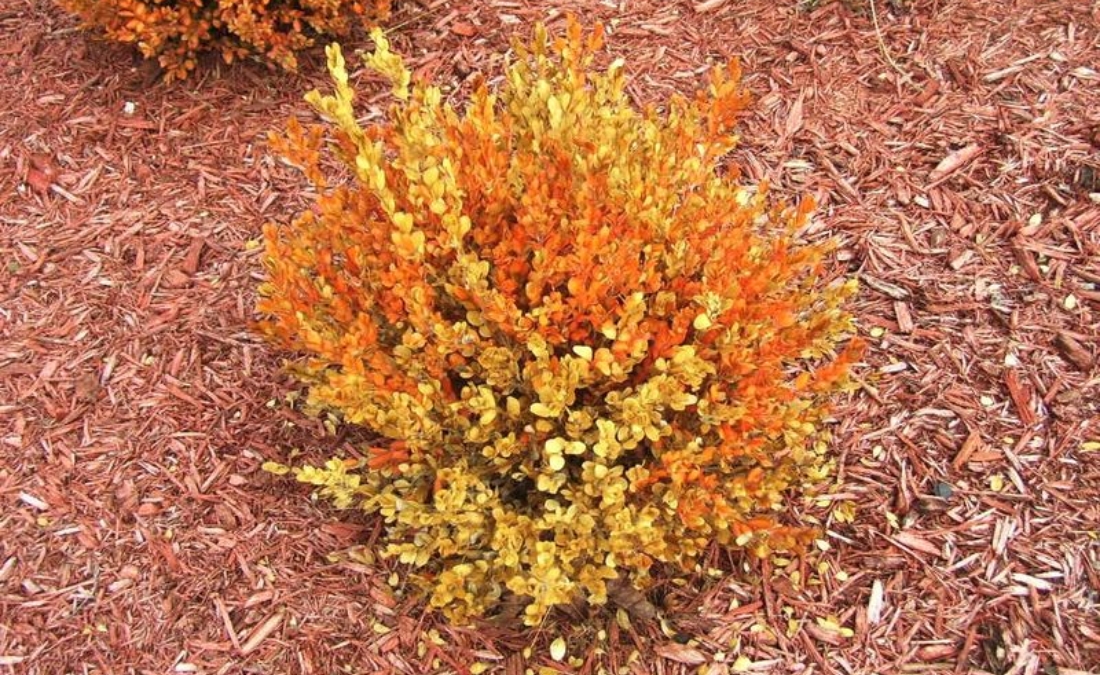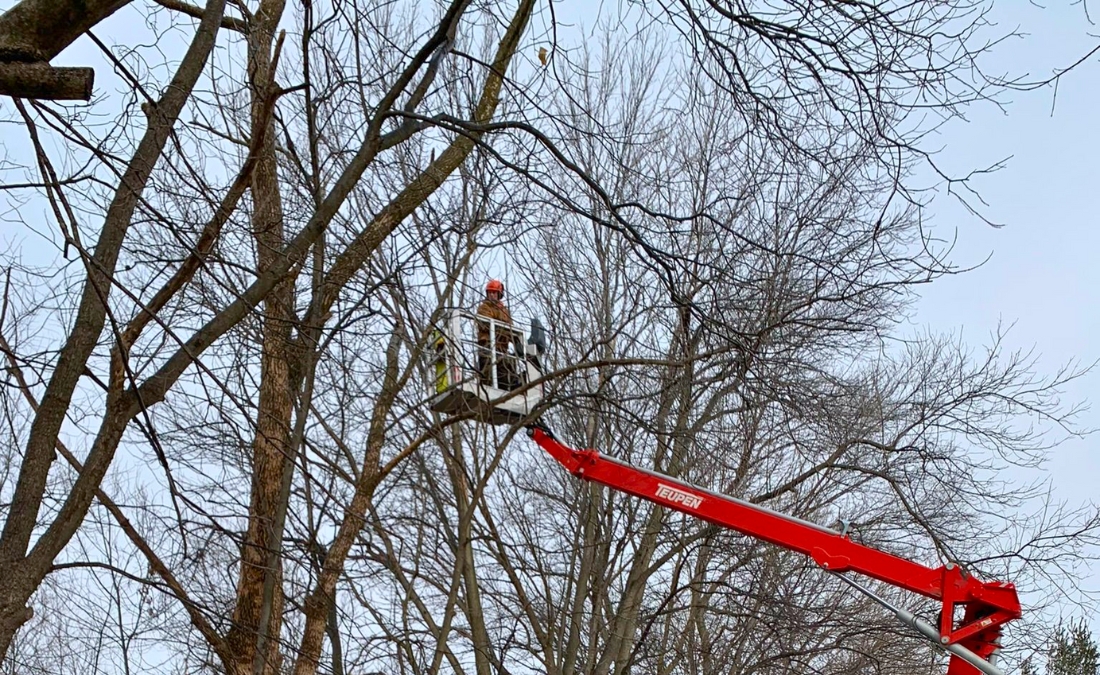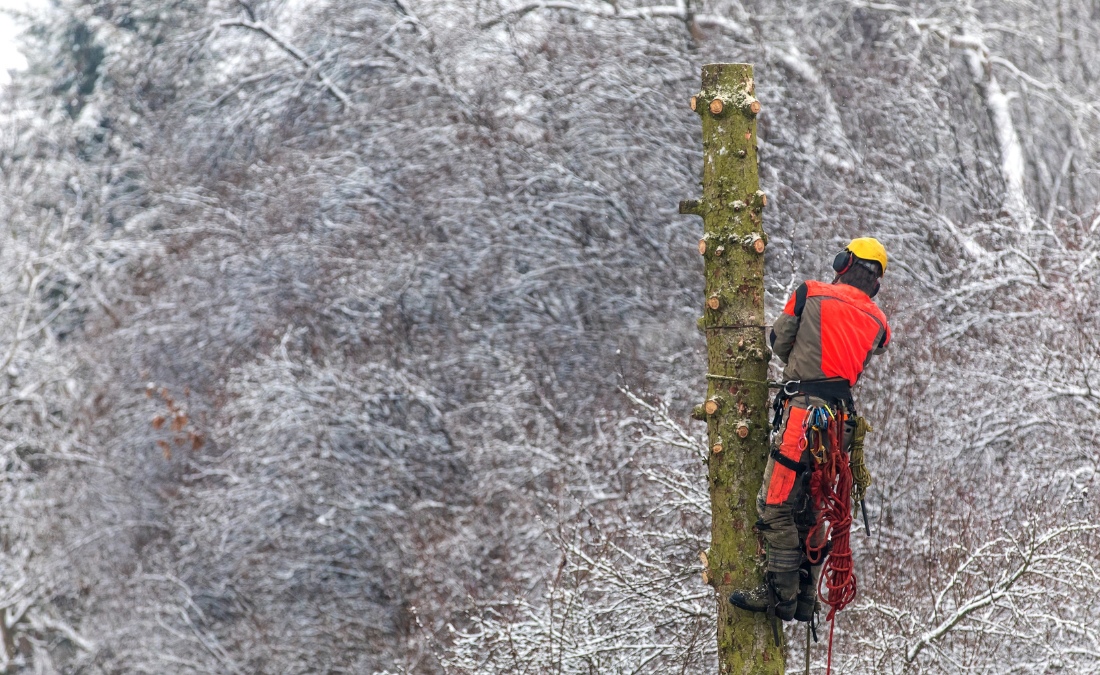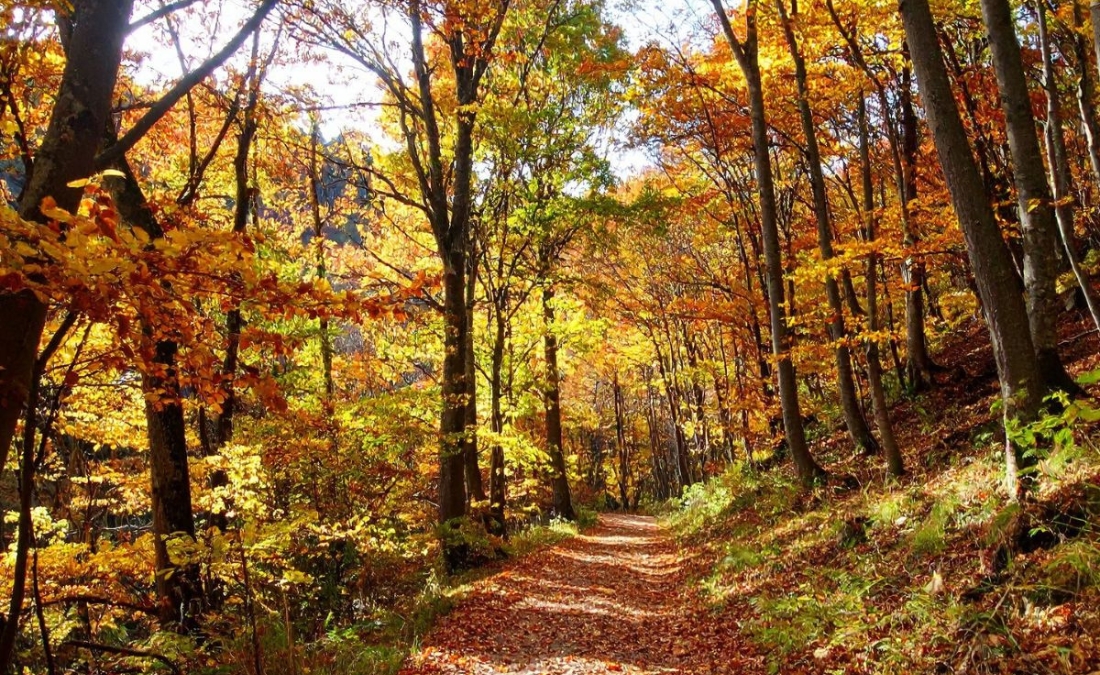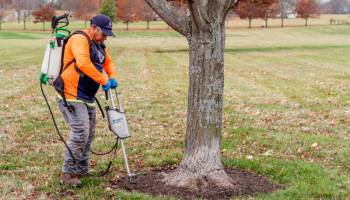5 Common Tree Diseases to Watch Out for in the Des Moines Area
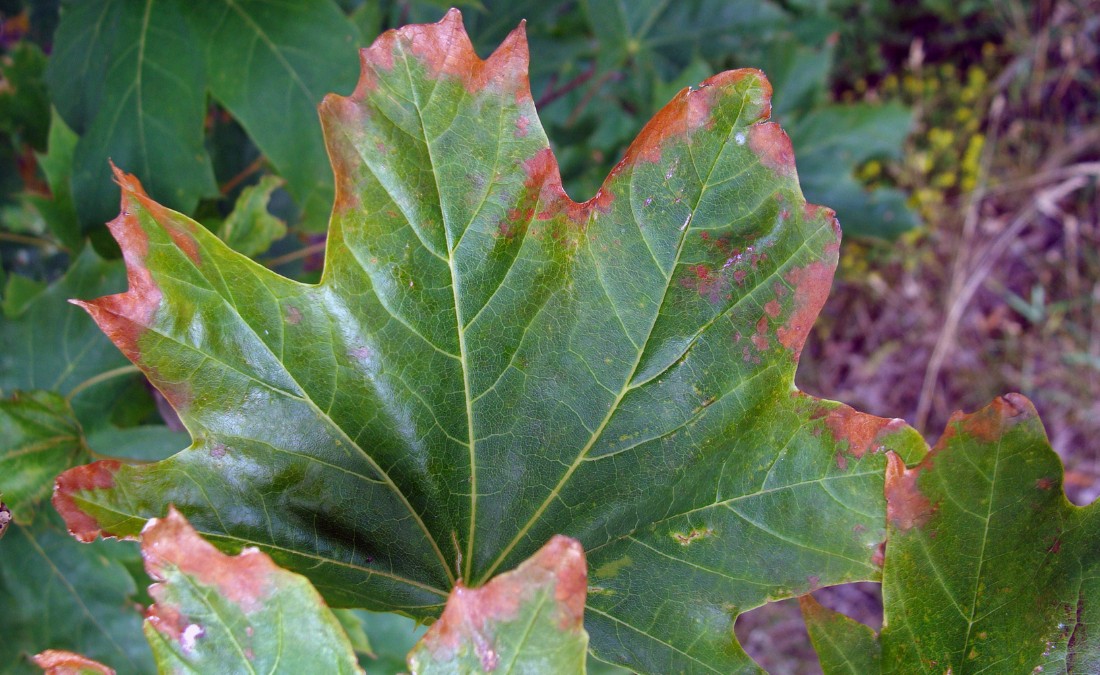
Some tree diseases in Des Moines kill within a year. Learn the early symptoms so you can catch problems before your tree becomes a safety risk.
It’s not uncommon for homeowners to look up at their trees in the spring or summer and wonder if the discolored leaves they see are a disease. One of the best things you can do to protect your trees is to know the common problems they face so you can spot the signs early. Learn about the common tree diseases in Des Moines and the symptoms to watch out for.
Key Takeaways:
- Oak wilt is a deadly fungal disease that can kill red oaks within weeks.
- Dutch elm disease, spread by bark beetles and root grafts, continues to threaten elm trees in Des Moines with no cure once infected, though preventive fungicide injections can help.
- Verticillium wilt (no known cure) enters trees through the soil and roots, blocking water movement and causing wilting and dieback.
- Anthracnose affects most tree species in Des Moines with leaf spots and blotches but rarely kills trees, typically requiring only pruning of infected branches rather than chemical treatments.
- Apple scab commonly affects crabapple trees in Des Moines with olive-green spots on leaves and fruit damage.
5 Common Tree Diseases in Des Moines to Watch Out For
Iowa trees face threats from several diseases that can kill or damage them. Knowing what diseases to watch out for and how they attack your trees will allow you to make smart decisions about when to get a professional to treat your trees. Some of the common diseases to watch out for in Des Moines include:
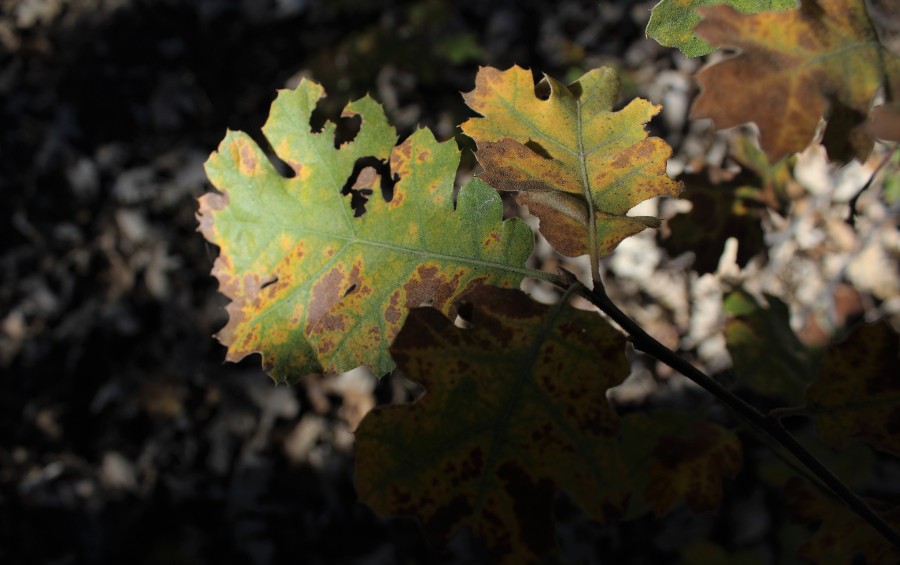
1. Oak Wilt
Oak wilt is a deadly fungal disease that has caused significant damage to oak populations throughout the eastern United States. The disease affects white and red oaks, though white oaks have more natural resistance. There is no cure for oak wilt; it can rapidly kill red oaks in 4-6 weeks and white oaks in a few years.
Sap-feeding beetles transport the fungus responsible for spreading oak wilt to trees. Alternatively, an infected oak can transmit the disease to a healthy tree through underground root grafts.
Symptoms in red oaks include:
- Foliage turning bronze
- Dead tips of leaves
- Gray streaking under the bark
White oaks will produce similar symptoms but much slower. Their leaves will also turn brown instead of bronze.
With no treatment available, the only option for trees is to prevent the disease from spreading to your oaks in the first place. Some methods arborists recommend to protect your oaks include:
- Prune in the Offseason: Open wounds from pruning will produce sap and encourage beetles to feed on your tree. To protect your oaks, keep pruning confined to the winter months when the beetles are not active. If you have to prune in the summer, apply a wound dressing to prevent beetles from feeding on sap (do not use wound dressings for other trees).
- Have an Arborist Perform Preventive Treatments: While there is no cure once the disease is present, preventive fungicides can protect your tree from oak wilt. Talk with an arborist about a treatment schedule for your mature oaks.
- Sever Any Root Grafts: If you have oak trees growing within 50 feet of each other, you can have a professional cut the grafted roots.
PRO TIP: Oak wilt isn’t the only problem oaks have to deal with in Iowa. Another common problem is horned oak gall.
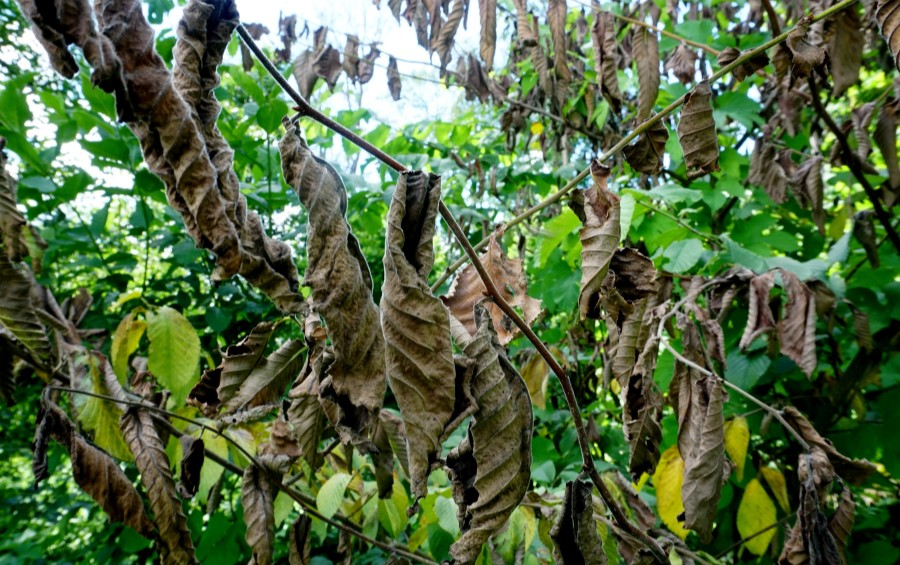
2. Dutch Elm Disease
Dutch elm disease (DED) is another deadly disease that can quickly kill your elms. DED is one of the oldest tree diseases we still deal with today, as it caused extensive damage to the elm population in the early 1900s.
The spread of DED is similar to oak wilt, as elm bark beetles and root grafts can spread the disease to elms. DED is fatal, and there is no cure once a tree has an infection.
Symptoms of DED include:
- Yellowing foliage on one branch
- Leaves wilting, browning, and falling as the disease progresses
- Brown streaks under the bark
Preventive fungicide injections and severing root grafts can protect your elms from DED.
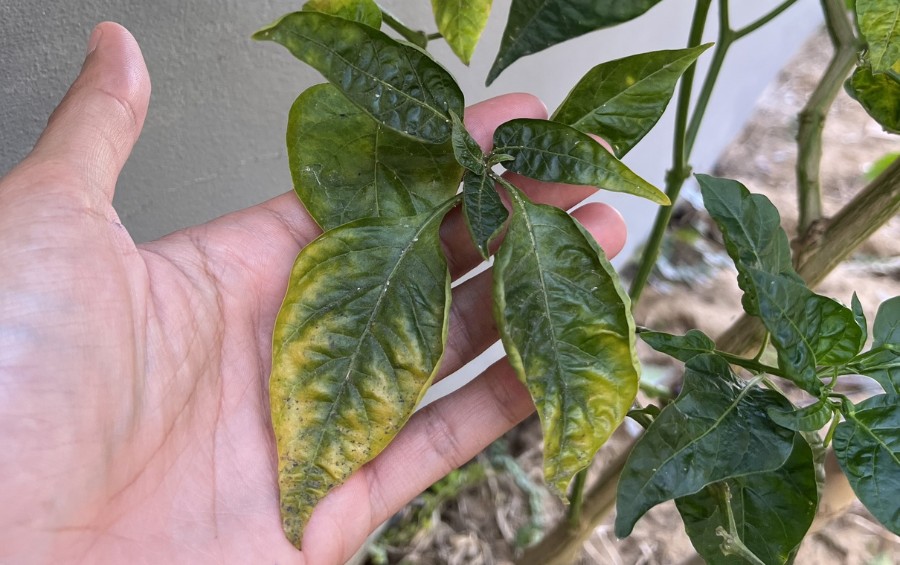
3. Verticillium Wilt
Verticillium wilt is another fungal disease, but instead of beetles transmitting the disease to your tree, it is the soil that you need to watch. The Verticillium fungi live in the soil and enter your tree through the roots. The disease blocks water movement throughout the tree, leading to symptoms such as:
- Wilting leaves
- Discolored leaves
- Branch dieback
- Loss of leaves
While there is no cure for this disease, you can extend the life of your trees infected with Verticillium wilt by keeping them healthy and vigorous. Have a professional fertilize your trees and prune any infected branches.
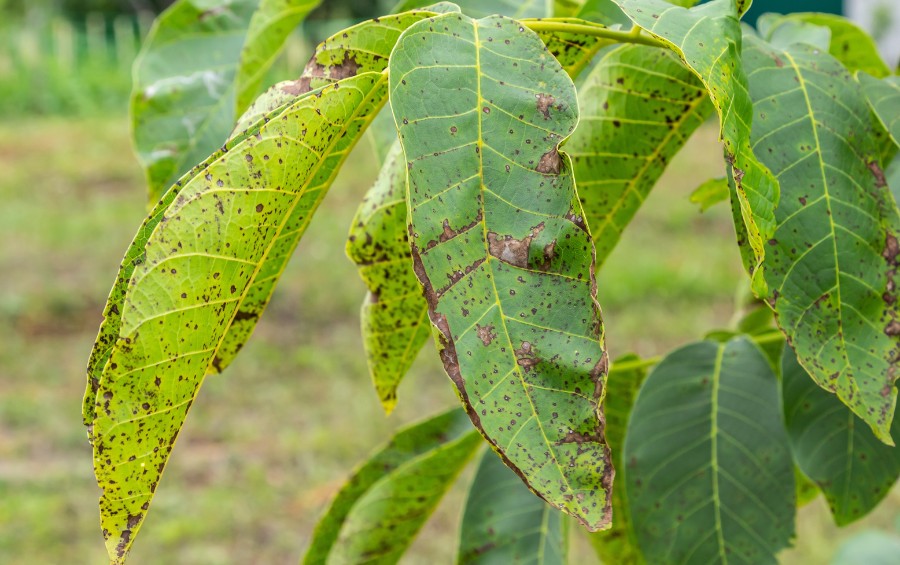
4. Anthracnose
Anthracnose is a group of related fungal diseases affecting most tree species in Des Moines. Each fungus typically attacks one species, so you won’t have to worry about your hickory tree spreading anthracnose to your ashes.
Some of the typical symptoms of anthracnose include:
- Small spots on leaves
- Brown blotches on leaf veins
- Leaf death in young trees
- Dead buds on susceptible trees like sycamore
The symptoms of anthracnose often seem severe and worrisome, but the disease is seldom fatal. Almost all trees can recover from anthracnose damage and push out new leaves later in the season to replenish the ones lost.
In most cases, you won’t need to use chemical treatments for anthracnose, as fungicides will not be as effective once the symptoms are present. Trimming any infected branches and disposing of the material is often enough to help your tree through an anthracnose infection.
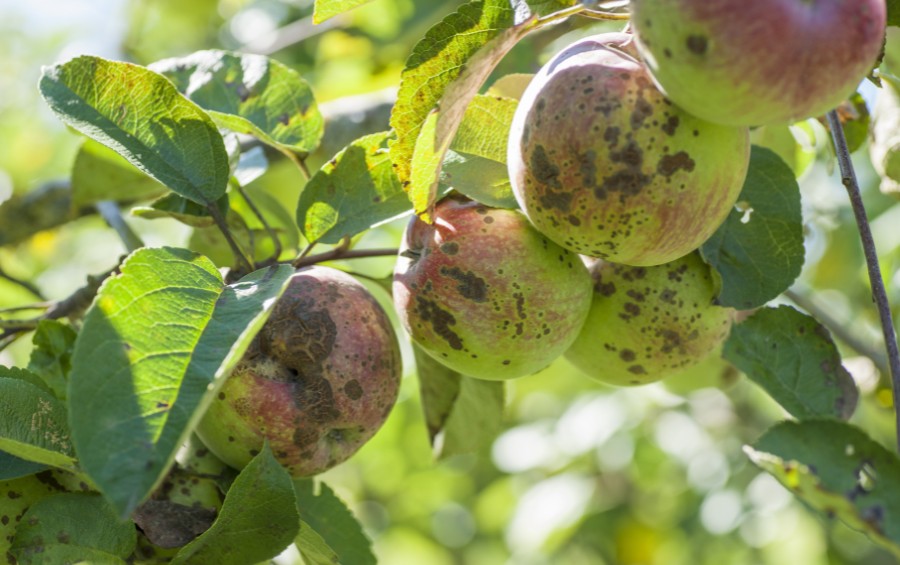
5. Apple Scab
Crabapple and apple trees are a popular choice amongst Des Moines homeowners. However, these trees face the threat of developing apple scab, the most common problem for crabapples in our state.
Apple scab is a fungal disease that attacks the leaves and fruit of trees in the Malus family. The symptoms typically include:
- Olive green spots on leaves
- Spots that turn brown as the infection continues
- Brown spots on fruit
- Cracks and deformities on fruit that is infected when young
The fungus that causes apple scab will overwinter on fallen leaves and then release spores in the spring. The wind carries those spores to new trees to infect the leaves and fruit. This cycle can repeat several times during a single season when the temperature remains warm and wet.
Chemical treatments are typically unnecessary for apple scab, as cultural controls are often effective.
“For apple scab, you’re best off having a professional prune your trees to increase air flow and light penetration in the canopy. This will lower the risk of humid and wet conditions developing in your trees. I also typically recommend a homeowner cleanup any fallen leaves from infected apple and crabapple trees and dispose of them to lower the risk of the disease spreading the next year.” – Joshua Dalton, Arbor Advisor at Arbor Masters
If the disease has been a consistent problem on your property, consider planting disease-resistant apple cultivars.
Frequently Asked Questions About Iowa Tree Diseases
We’ve answered some common questions to help you better understand the threat of tree diseases and how to take care of them.
Can I treat trees myself when I think they have a disease?
In most cases, having a professional treat your trees for disease is better. Treatment often involves injecting fungicides into a tree, and without the proper tools and timing, the treatment may not be effective or may even harm the tree.
Should I remove at-risk trees preventively before they develop a disease?
No, in most cases, you do not need to remove a tree just because it is at risk of developing a disease. Arborists have developed preventive treatments for many diseases that protect your tree from contracting a disease. If you have an old and valuable tree on your property that you don’t want to lose, ask an arborist if preventive treatments are possible.
When should I begin looking for symptoms of tree diseases in Des Moines?
It depends on the disease and the weather that year. Some symptoms show up in early spring, while others may not appear until late spring or even early summer. Your best bet is to talk with a local arborist – they’ll know when to start watching for signs based on what’s happening in your area.
Trust Arbor Masters to Help Diagnose and Treat Your Des Moines Trees
Diseases damage trees, stressing or killing them if you don’t act. Detecting the symptoms of these diseases early and enlisting the help of an arborist could be the difference between saving your tree and removing it. When you want to ensure the trees on your property get the best care possible, trust the experts at Arbor Masters of Des Moines.
Our team of ISA Certified Arborists understands the local trees and their problems. We can treat your trees and set up preventive injections to keep them healthy year-round. Call us today at 515-218-2025 or request a quote online.
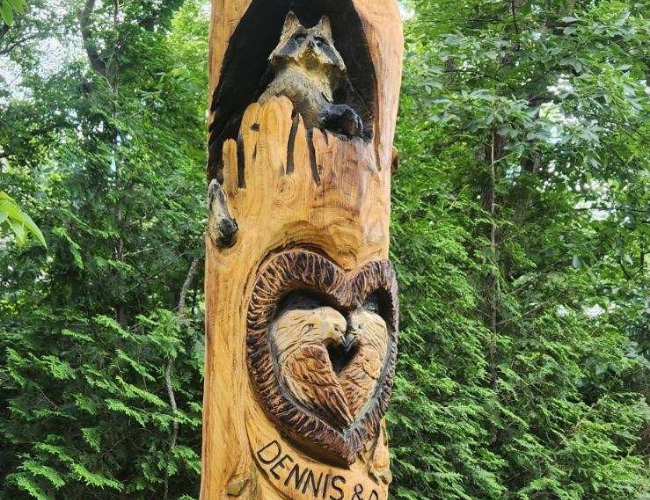
Get the latest local news, tree care tips, special offers, and company updates directly to your inbox! It's easy to subscribe and there's no spam - we promise.
"*" indicates required fields

